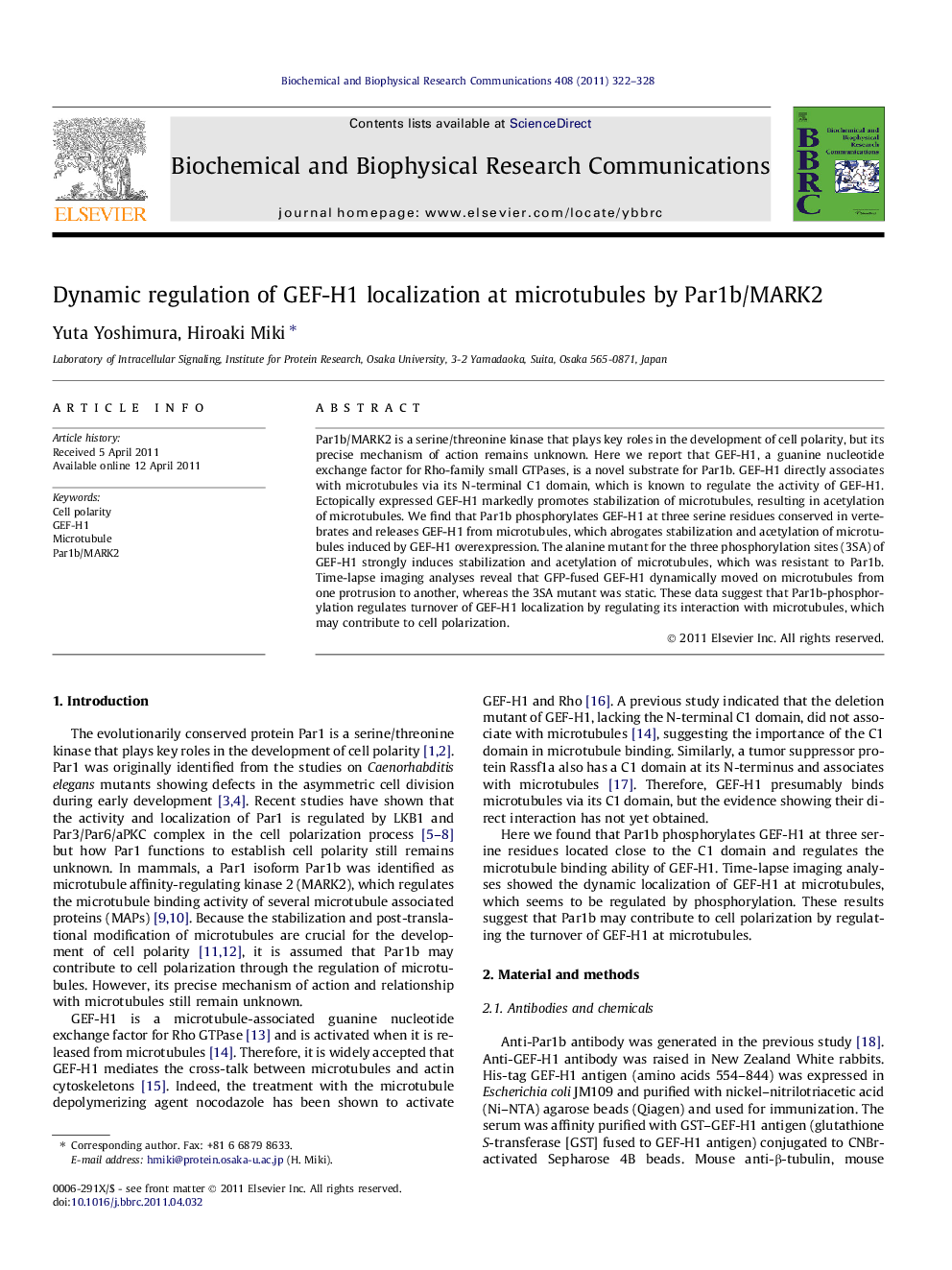| Article ID | Journal | Published Year | Pages | File Type |
|---|---|---|---|---|
| 1930650 | Biochemical and Biophysical Research Communications | 2011 | 7 Pages |
Par1b/MARK2 is a serine/threonine kinase that plays key roles in the development of cell polarity, but its precise mechanism of action remains unknown. Here we report that GEF-H1, a guanine nucleotide exchange factor for Rho-family small GTPases, is a novel substrate for Par1b. GEF-H1 directly associates with microtubules via its N-terminal C1 domain, which is known to regulate the activity of GEF-H1. Ectopically expressed GEF-H1 markedly promotes stabilization of microtubules, resulting in acetylation of microtubules. We find that Par1b phosphorylates GEF-H1 at three serine residues conserved in vertebrates and releases GEF-H1 from microtubules, which abrogates stabilization and acetylation of microtubules induced by GEF-H1 overexpression. The alanine mutant for the three phosphorylation sites (3SA) of GEF-H1 strongly induces stabilization and acetylation of microtubules, which was resistant to Par1b. Time-lapse imaging analyses reveal that GFP-fused GEF-H1 dynamically moved on microtubules from one protrusion to another, whereas the 3SA mutant was static. These data suggest that Par1b-phosphorylation regulates turnover of GEF-H1 localization by regulating its interaction with microtubules, which may contribute to cell polarization.
► Par1b/MARK2 is a polarity kinase but its mechanism of action is unknown. ► We find GEF-H1 as a novel substrate for Par1b. ► Phosphorylation of GEF-H1 by Par1b inhibits its interaction with microtubules. ► Par1b dynamically regulates the localization of GEF-H1 in cell protrusions.
